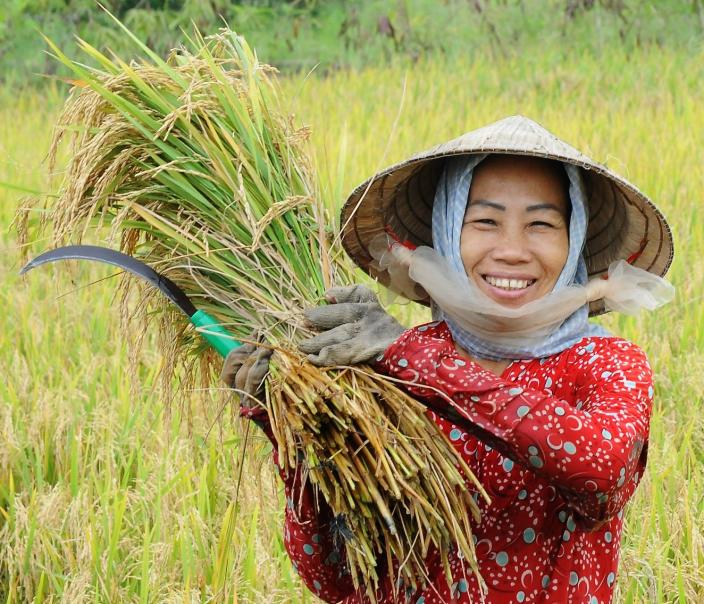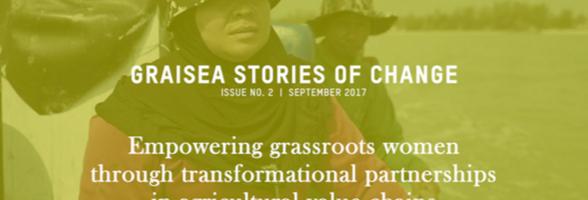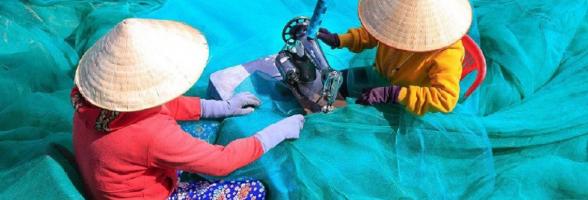As Vietnamese southern farmers struggled with drought and saline intrusion, the country is yet hit with the COVID-19 pandemic. Facing a twofold crisis, smallholders proved that their sound preparedness and good collaborations could work wonders amid a shaken economy.
Local and global threats
The Mekong Delta (MKD) of Vietnam, which is home to 19 million people or 21 percent of Vietnam’s population, produces over 90 percent of the country’s exported rice and more than 60% of the country’s seafood.
In early 2020, communities in the MKD experienced the most severe drought and saline intrusion, even worse than the historic 2016 El-Nino. “Never has such a menace eaten into the mainland as it is doing now,” exclaimed Deputy Minister of Agriculture and Rural Development Nguyen Hoang Hiep. As salinity reached 0.4 percent recorded 68km from estuary, which exceeded production threshold of most rice varieties, some provinces were short on fresh water for domestic use, let alone farming.
While the local threat was looming, COVID-19 hit. The COVID-19 pandemic is an extraordinary and unprecedented crisis. Supply chains are disrupted, consumer demands plummeted, and businesses closed. Export was halted, and some enterprises stopped buying from small producers or were unable to make timely payments. As a chain reaction, farmers were incapable of re-investing, and their livelihoods were threatened.
Yet again, Vietnamese farmers faced headwinds.
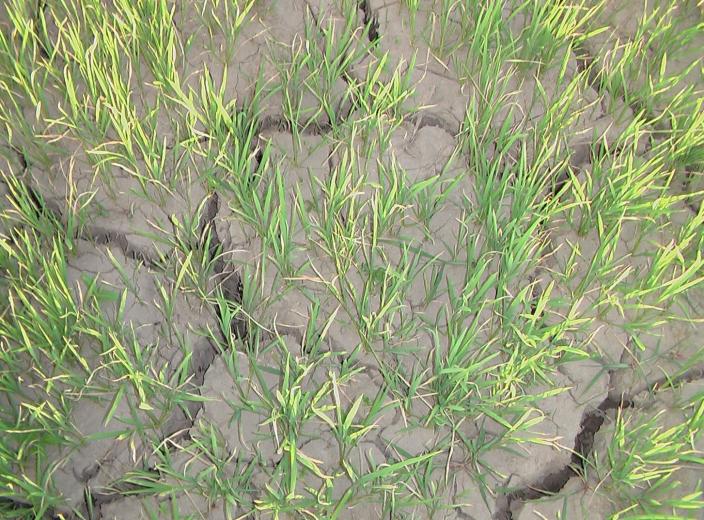
Preparedness is key
The 2015-2016 drought and saline intrusion were a painful lesson. To minimize the damage from climate change and extreme weather events, the Gender Transformative and Responsible Agribusiness Investments in South East Asia (GRAISEA) project puts a great emphasis on building the resilience of participating smallholders. Following sustainable production practices and standards (i.e., SRP, ASC, and organic standards), farmers are trained to use less production input for higher profits, as well as to improve their natural resources efficiency. Lessening the reliance on input improves farmers’ resilience to climate change in the long term. They are also familiarized with harsh farming conditions like water and resources scarcity.
One of the key interventions of GRAISEA is conducting planning sessions on Vulnerability Risk Assessment, which not only improved farmers’ awareness of the changing climate but also allowed them to develop risk scenarios and adaptation plans. Specifically, producers would take the historic drought in 2015-2016 as a benchmark to pinpoint the potentially affected ponds and paddies, thus adjust their sowing and stocking. In 2020, shrimp farmers in Ca Mau stocked ponds with only 38 percent of post larvae (PL) compared to last year. Production input was saved, risks were minimized, and damages were diminished.
Intensive shrimp farmers also converted some of their ponds to extensive farms temporarily. Although the net revenue is only 30 percent of a bumper intensive harvest, extensive ponds, which require much less investment, generate some income for them to live by should intensive ones fail.
Successful models like these where preventive measures are taken should be replicated in other regions and farming areas.
Sometimes, small-scale is an advantage
In coping with disasters, agile and flexible small-scale production models fared better than large ones.
Farmers in the MKD have learned to diversify their livelihoods and income sources. When shrimp quality drops, they make prawn crackers or wind-dried shrimps. When shrimp markets are fine, they would still stock crabs in their ponds, just in case. In some exemplifying resilient models, several shrimp species are farmed simultaneously for both international and domestic markets.
Understanding that secure income is the quintessential element in building resilience, GRAISEA has consulted and facilitated initiatives to diversify farmers' livelihoods and sell value-added products. It supported women-led initiatives and promoted women’s participation in generating income for the family and building resilience.
It was common to regard small-scale farming as a weakness. But when disasters hits, the flexibility of small-scale farming allows for quick transformation, scattered investment, and strengthened resilience to contingencies. This could be a lesson for larger producers.
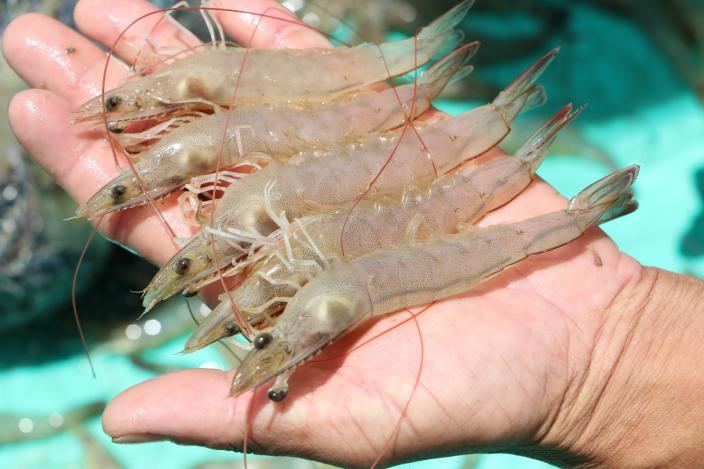
Unity means strength
Flexibility is key to survival, but collaboration is the password to a sustained development. Engaging the private sector and tightening the value chain are the other focus of GRAISEA. As mutual trust and understanding were formed, enterprises are willing to support small-scale producers in time of crisis, be it lending production input in advance or buying and storing their products as a means to facilitate benefit-risk sharing relationships.
GRAISEA also initiates risk reserve funds with joint contributions from cooperatives and partner enterprises. These are expected to support worst-affected producers, mostly lone women or families with women as breadwinners. Technical and financial support for the vulnerable would stimulate recovery as Vietnam enters the new normal.
Timely guidance from local authorities was also an integral part in the communities’ swift reactions. They alert farmers of extreme weather conditions a couple of months in advance, and recommend proper farming practices. It is hopeful that frequent dialogues will pave way for additional funding allocated for damage mitigation and recovery.
Lessons learned
Positive signs are showing for farmers, as Vietnam starts building back better. Rice sells at a higher price in the domestic market, and the price of shrimp is picking up. The majority of smallholders in GRAISEA overcame the coupled mishaps and are resuming operations.
- The first lesson learned is the lesson on risk assessment and management. It should come first in every production/business model should we want to tread the sustainable path. Producers and enterprises should resist the urge to go "all-in” if risks are looming. Farmers must consider patterns of disaster thresholds to develop scenarios and devise business plans accordingly. Specially in MKD, drought and saline intrusion are likely to return with increasing severity; it is best to stay prepared.
- Second, flexible and diversified climate resilient production models should be advocated in the MKD regions. For example, the rice-shrimp rotation model proves effective in adapting to climate change. Rigid farming systems are less likely to transform, thus more prone to risks. It is also necessary to review current production practices and seasonal calendar to identify other relevant farming systems and business models in the region. As MKD will face increased salinization, is rice still the optimal crop or should farmers consider alternatives when conditions are too dire?
- Third, strengthening horizontal and vertical relationships in the value chain through regular dialogue and better sharing mechanisms builds smallholders' resilience against shocks, while also ensuring a stable supply chain for enterprises.
A silver lining
The COVID-19 pandemic could turn into an opportunity for food producers in Vietnam. As governments are strengthening food security and value chains, support in agriculture is likely to bolster.
Policies supporting flexible production models in the MKD have been in the pipeline for a long time. However, after the twofold crisis, the government might accelerate the process and impose a legal framework that supports smallholders in a prompt and effective transformation.
This story was written by the GRAISEA team in Vietnam, with support from the GRAISEA PMU.
